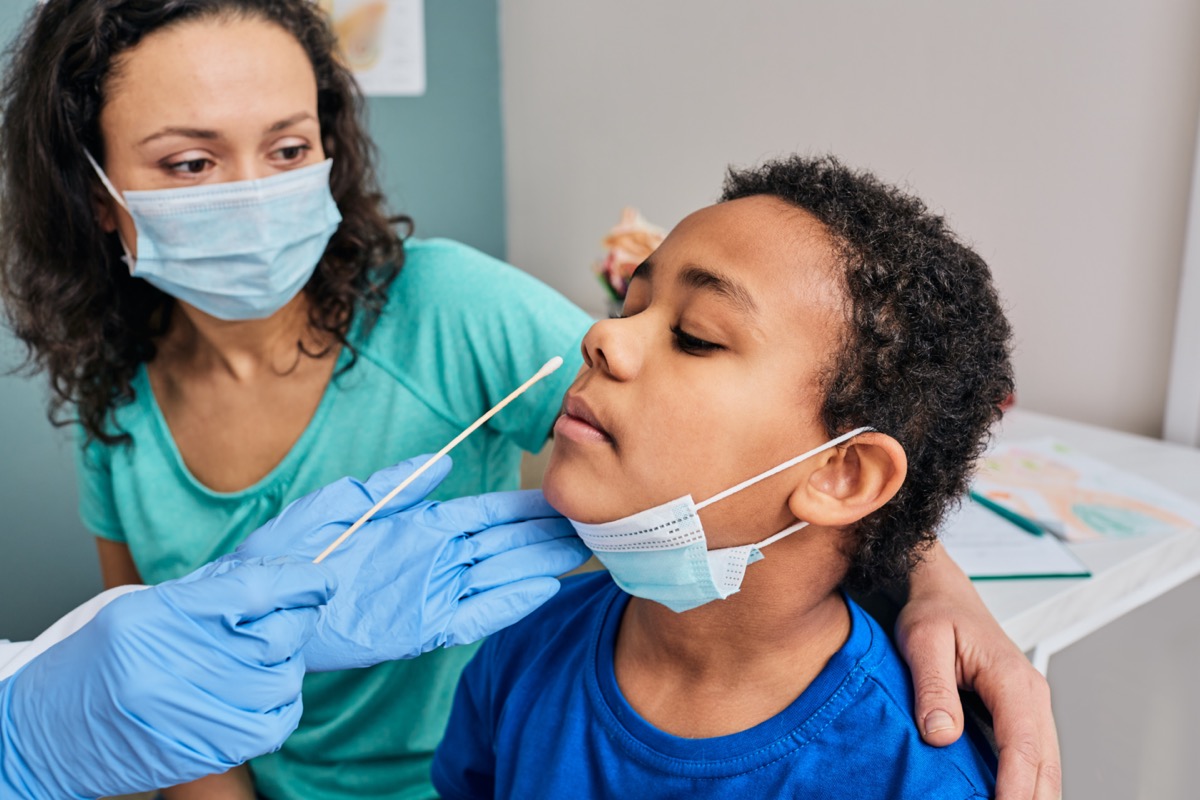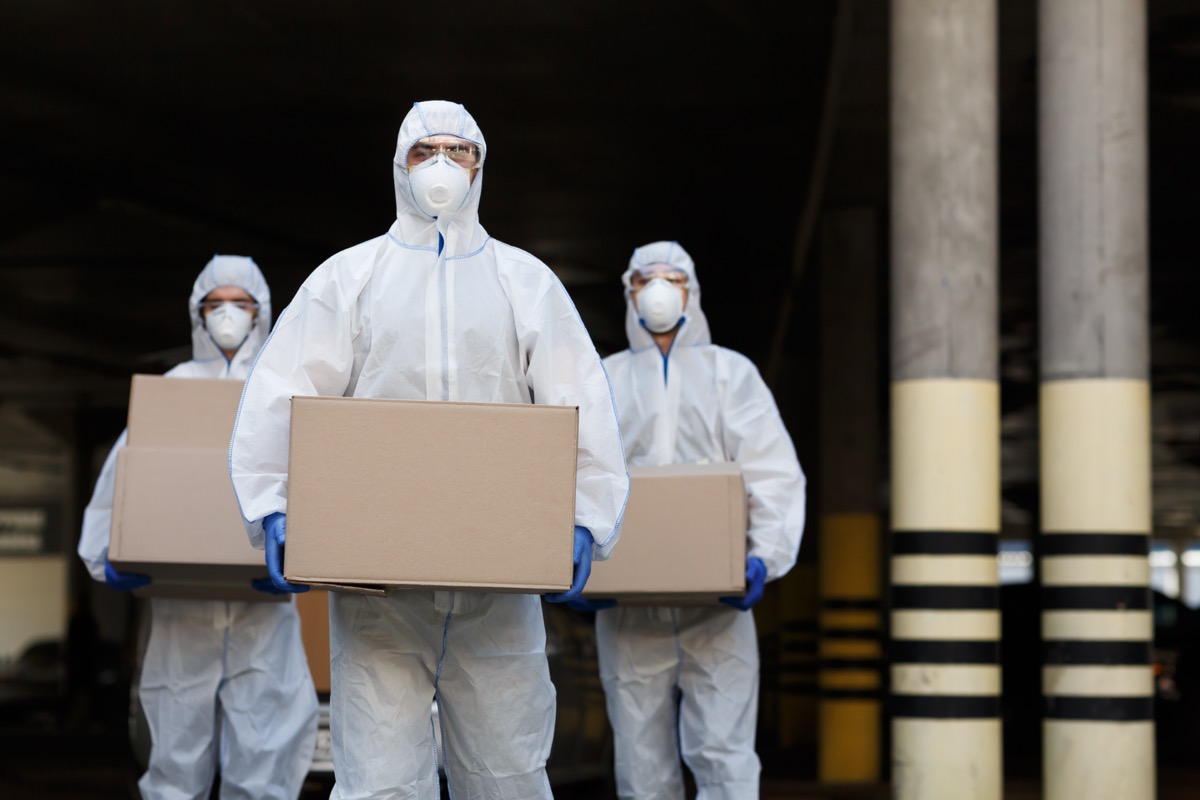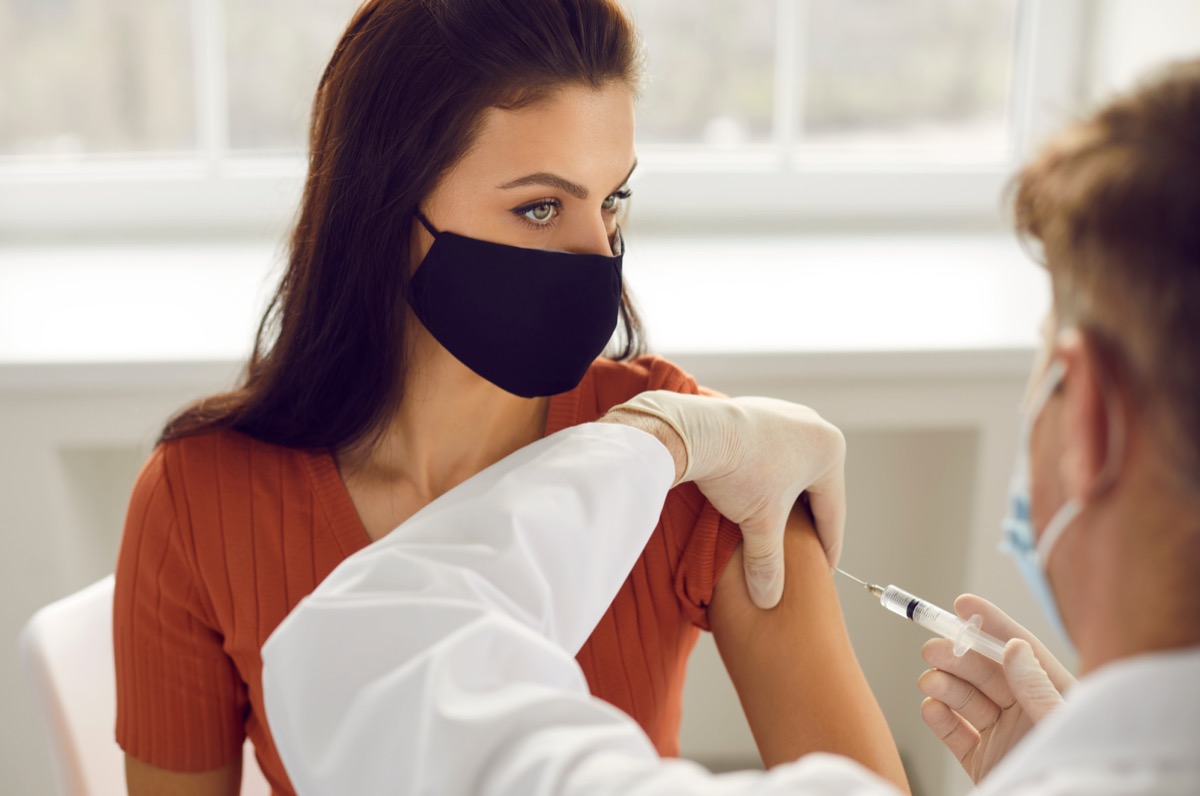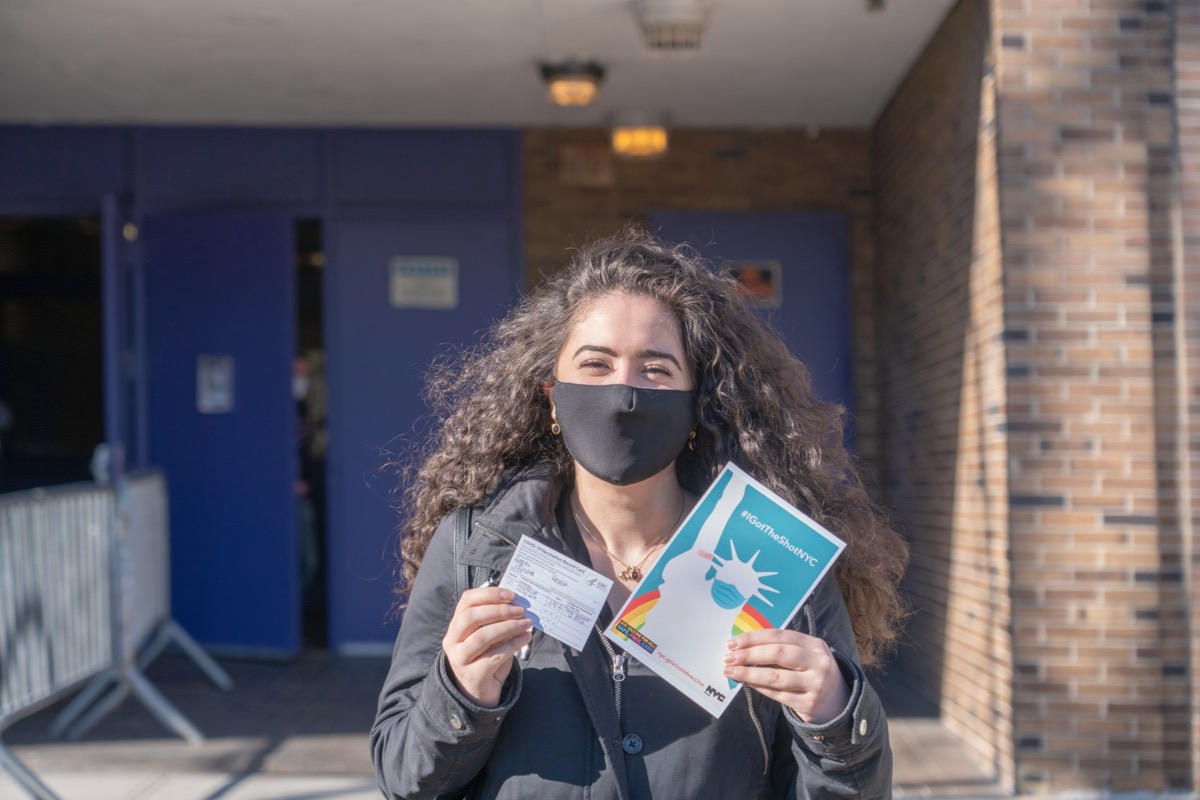More than two years since the start of the pandemic in March 2020, the CDC is announcing key changes to COVID-19 guidelines—including one very significant about-turn. "This is a major change in recommendations," says CNN Medical Analyst Dr. Leana Wen. Here is what you no longer have to do to avoid COVID, according to the CDC. Read on—and to ensure your health and the health of others, don't miss these Sure Signs You've Already Had COVID.
Yes, masks are still recommended for people who have high levels of infection in their communities. "I hesitate to say that we are approaching a post-COVID world when so many are still being ravaged by this virus," says Yale Medicine infectious diseases specialist Sheela Shenoi, MD, MPH. "If there is anything we should have learned, it is that we are all interconnected; what happens in one part of the world affects everybody."

The CDC is also dropping the recommendation that students exposed to the virus either quarantine at home or get tested every day. "The current conditions of this pandemic are very different from those of the last two years," says Greta Massetti, who leads the Field Epidemiology and Prevention Branch at the CDC. "High levels of population immunity due to vaccination and previous infection and the many available tools to protect the general population, and protect people at higher risk, allow us to focus on protecting people from serious illness from Covid-19."

The CDC is planning a shake-up to make the agency more "nimble" and better equipped to swiftly and effectively respond to future public health threats. "I feel like it's my responsibility to lead this agency to a better place after a really challenging three years," CDC director Dr. Rochelle Walensky told the Associated Press.
"We saw during COVID that CDC's structures, frankly, weren't designed to take in information, digest it and disseminate it to the public at the speed necessary," says Jason Schwartz, a health policy researcher at the Yale School of Public Health.

The CDC's new streamlined guidelines are a result of mass vaccination and boosters, officials say. "We're in a stronger place today as a nation, with more tools—like vaccination, boosters, and treatments—to protect ourselves, and our communities, from severe illness from COVID-19," says Dr. Massett. "We also have a better understanding of how to protect people from being exposed to the virus, like wearing high-quality masks, testing, and improved ventilation. This guidance acknowledges that the pandemic is not over, but also helps us move to a point where COVID-19 no longer severely disrupts our daily lives."

In a major change to established protocol, the CDC is dropping quarantine and distancing recommendations for people who come into close contact with an infected person. "Quarantine applies to someone who has been in close contact with an individual infected with the coronavirus. Close contact, according to the CDC, means you've been within 6 feet of someone with Covid-19 for a total of 15 minutes or more over a 24-hour period," says Dr. Wen. "Earlier in the pandemic, the recommendations were that those exposed to Covid-19 had to quarantine themselves from others and not be in public. That's how someone needing 'quarantine' was defined — as someone who has not been diagnosed with Covid-19 but does have a significant exposure. Now, someone with known exposure no longer needs to quarantine, but they do need to have a period of 10 days of masking. On the other hand, someone should be in isolation if they have been diagnosed with Covid-19. Isolation is defined as being physically separate from others in order to prevent transmitting the virus during the infectious period." And don't visit any of these 35 Places You're Most Likely to Catch COVID.
The post You No Longer Have to Do This to Avoid COVID appeared first on Eat This Not That.
----------------
By: Ferozan Mast
Title: You No Longer Have to Do This to Avoid COVID
Sourced From: www.eatthis.com/news-you-no-longer-have-to-do-this-to-avoid-covid/
Published Date: Sat, 27 Aug 2022 11:30:19 +0000
Read More
 HealthWellnessFitnessBeautyVideosPrivacy PolicyTerms And Conditions
HealthWellnessFitnessBeautyVideosPrivacy PolicyTerms And Conditions
